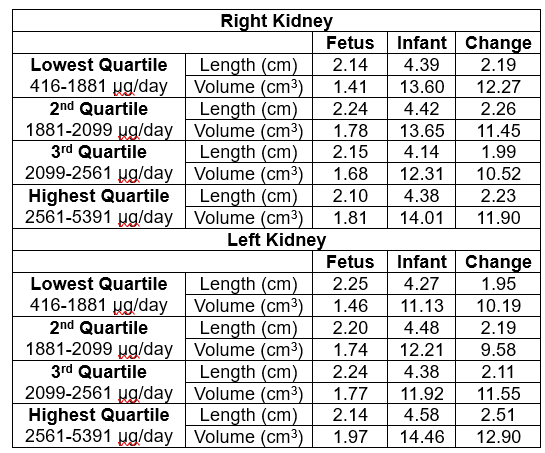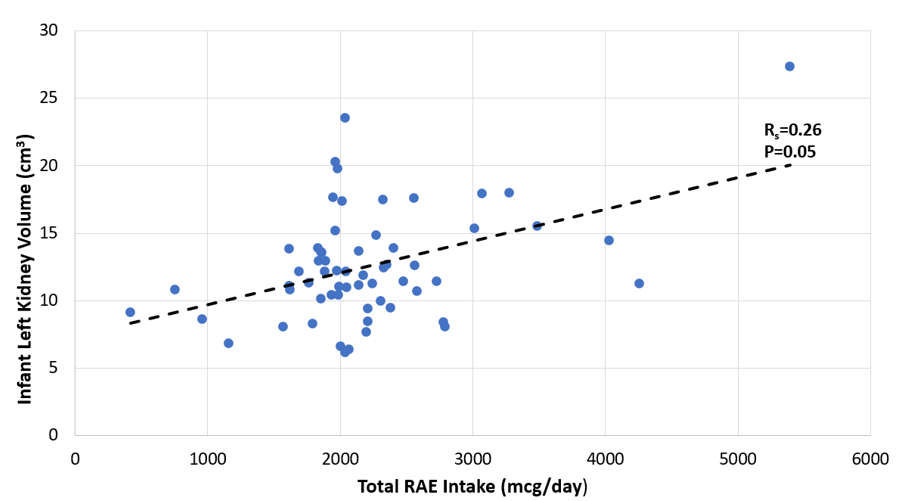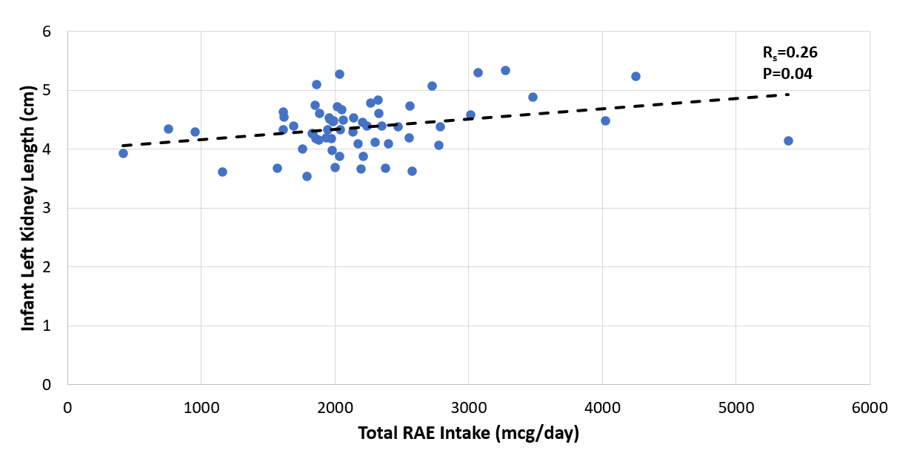Nephrology
Session: Nephrology 3
6 - Evaluating the Association Between Maternal Dietary Vitamin A Status and Fetal Kidney Development
Sunday, May 5, 2024
3:30 PM - 6:00 PM ET
Poster Number: 6
Publication Number: 6.2113
Publication Number: 6.2113

Anum Akbar, MBBS (she/her/hers)
Ph.D. Candidate
University of Nebraska Medical center
Omaha, Nebraska, United States
Presenting Author(s)
Background: Vitamin A is a fat-soluble vitamin that plays a crucial role in the development of fetal organs. In vitro, studies have indicated that total number of nephrons is impacted by vitamin A status; however, the effect of maternal dietary vitamin A intake on fetal kidney development remains unknown. As suboptimal kidney growth and development can contribute to later renal dysfunction, it is important to identify potential etiologies and any modifiable factors such as maternal intake of vitamin A.
Objective: The objective of this study is to evaluate the relationship between maternal vitamin A intake and fetal and infant kidney development, aiming to understand the potential impacts of vitamin A intake on early renal growth.
Design/Methods: An IRB-approved study recruited pregnant women at 18-22 weeks of gestation. Women completed a food frequency questionnaire (DHQ III) to evaluate vitamin A intake between 24-28 weeks of gestation (n=72). Vitamin A intake was measured in retinol activity equivalents (RAE, mcg/day), and included food and supplemental sources. Bilateral kidney size and volume was measured both between 16-23 weeks gestation (n=69) and 24-48 hours after birth (n=61). Kidney length and volume were correlated with maternal vitamin A intake using Spearman’s R. The Kruskal-Wallis test was used to compare kidney length and volume across quartiles of maternal vitamin A intake. A p-value of < 0.05 was considered statistically significant.
Results: A total of 72 maternal-infant dyads were included in this analysis, with a median maternal age of 32 years. The median daily RAE intake was 2099 mcg/day. Infant left kidney length (Rs=0.26; p=0.04) and volume (Rs=0.26; p=0.05) were correlated with continuous maternal vitamin A intake . After adjustment for total energy intake, a 1,000 mcg/day increase in maternal RAE intake predicted a 3 cm3 increase in infant left kidney volume (p < 0.001). Similarly, a 1,000 mcg/day increase in maternal RAE intake predicted a 2.5x10-7 cm increase in infant left kidney length (p=0.01). There were no statistically significant associations between vitamin A intake and length or volume in the right kidney.
Conclusion(s): A positive correlation was found between continuous maternal vitamin A intake and infant left kidney length and volume, with a 1,000 mcg/day increase predicting a significant increase in volume and length after adjusting for total energy intake. These findings suggest a potential influence of maternal vitamin A intake on early infant kidney growth, emphasizing the importance of further research in this area.



